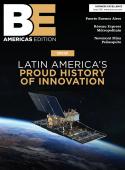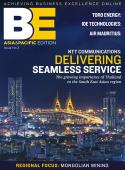Motoring down the lean road┬áSL Montevideo Technology owes much of its success to its efforts in the fields of quality and lean, vice president of operations Dave Scott tells Andrew Pelis. SL Montevideo Technology Inc., a division of SL Industries, has been involved in the design and manufacture of high-performance precision AC, DC, BLDC and stepper motors, power electronics, controllers and windings for aerospace, defense and industrial markets worldwide since 1949. Since his arrival at the company in 1997, Dave Scott, vice president of operations, has overseen the transformation of SL-MTIÔÇÖs operations both at the headquarters in Montevideo, Minnesota, and at the Matamoros plant in Mexico. The results have been dramatic, says Scott. ÔÇ£WeÔÇÖve been able to almost triple the business in that time; it has been consistent, sustained growth, and the future looks extremely bright. We have aligned with our partners in business, which has resulted in additional business by being able to bring value-added opportunities to our customers.ÔÇØ ScottÔÇÖs background was in lean techniques long before he joined SL-MTI. His day-to-day responsibilities are to oversee all operations for the plants, managing roughly 200 direct labor employees. Implementing lean was not straightforward, as he explains. ÔÇ£When I first joined the company, we had an additional manufacturing facility in Minnesota, and due to lean activities we were able to shut that facility down and transform the shop floor into single-piece-flow manufacturing cells.ÔÇ£We first had to build a strong team,ÔÇØ Scott continues, ÔÇ£and once this was in place, we began looking at demand flow technology. Then we started in the early part of this decade to hit our stride with lean implementation, with strong encouragement from our parent company SL IndustriesÔÇÖ corporate president, James Taylor. We started with the operational excellence model, established teams, put in a visual factory, cleaned up our factory with 5S (which has now become 6S, as we have included safety) and then looked at waste reduction opportunities via the use of value stream mapping and implementing quality tools.ÔÇØThe companyÔÇÖs top-down strategy naturally relied heavily on training people from the outset about what lean was and adopting a Plan-Do-Check-Act approach to every process undertakenÔÇöa technique it still prides itself on today. Having sent employees to the Demand Flow Institute for demand flow technology training, the company then trained its trainers and worked with the entire workforce. Scott admits that it was initially difficult for experienced workers to embrace all aspects of the new approach. ÔÇ£There is always a propensity to slip back to what you feel more comfortable with, and we had to take people out of their comfort zones. We established cross-functional employee teams to develop work cells, while staff members were part of the kaizen events that established what their work environments were going to be.ÔÇØ┬á As an AS 9100 and ISO certified business, SL-MTI has also increasingly involved employees in the auditing processes for all quality processes. ÔÇ£Six sigma quality is one of our main strategies for problem solving, and we have black belts and green belts in Mexico and additional green belts in Montevideo,ÔÇØ says Scott. ÔÇ£WeÔÇÖve incorporated TPM programs in both facilities, and our organization is extremely training-intensive.ÔÇ£Every six months we promote a new group of employees from the shop floor and other function areas to become quality system auditors. This helps all employees over time to have a complete understanding of the total quality system. We continue to operate kaizen events and reward employees financially based on the performance of the company. They are rewarded for reductions in cost of poor quality and also for the companyÔÇÖs overall performance,ÔÇØ adds Scott.Working for customers such as Boeing, Airbus and Lockheed, quality is of paramount importance, and one of the key challenges in implementing lean was to ensure this isnÔÇÖt compromised. ÔÇ£You can never compromise quality,ÔÇØ assures Scott. ÔÇ£When we work on new processes, we use tools such as PFMEA [process failure mode effects analysis] to mitigate potential risk in a process. We have a technical services group that manufactures prototypes and acts as the liaison between design and production, and their goal is to make sure our products are designed for manufacturability. We therefore have done an excellent job on the front end. Boeing, Lockheed and Airbus are all very big on process validation, and thatÔÇÖs one of the key elements that we incorporate when developing processes.ÔÇØ┬á One of the most striking aspects of the new lean setup is the visual appearance of the two sites. ÔÇ£On the visual management side, KPI [key performance indicators] management is key in meeting our performance goals. Another important aspect of our operations strategy is for us to remain agile. WeÔÇÖre in an environment where we have many different designs and applications, and weÔÇÖve looked at the common denominator, which is process, and put a heavy emphasis on the standardization of process and quick changeover, which helps our agility in meeting changing customer demands. WeÔÇÖve set up our value stream maps and have a 5S program, and weÔÇÖre converting from a paper visual factory to electronics now. Everything is on real time. We have ongoing monthly kaizen events, and the process of continuous improvement is never done.ÔÇØ With such successful lean and quality processes already in place, the company is well set in its traditional defense and commercial aerospace markets. ÔÇ£Our company culture is based on excellence and adding value for our customers,ÔÇØ Scott says. ÔÇ£We tend to stay in the niche markets in which we specialize.ÔÇ£Part of our business strategy,ÔÇØ he continues, ÔÇ£has been to partner with our customers and establish a lot of value-added opportunities, which helps us to grow and reduce total cost to our customers. Much of that comes from assembly and motor design, which has established us as one of the leading motor manufacturers for very specialized applications. WeÔÇÖre able to meet rigorous applications with our design and manufacturing experience.ÔÇØThis strategy has seen the company forge longstanding relationships with its key customers, culminating in its involvement with the Airbus A350 and A380 programs and BoeingÔÇÖs new 787.Scott says that in recent years the same technology has been applied to the medical industry ÔÇ£because the performance-to-weight ratios of motors we use lend themselves well to medical applications, owing to their light weight and high performance. In recent years weÔÇÖve also been involved in down-hole oil exploration and made motors for that process.ÔÇØWith further expansion of the site in Mexico planned for 2009 and green initiatives very much on the agenda, SL-MTI is still continuously improving. ÔÇô Editorial research by Alan Iodice┬á









